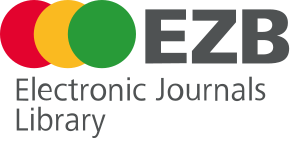Burnout syndrome and socioeconomic level of resident doctors in public hospitals in Maracay, Venezuela
DOI:
https://doi.org/10.56294/shp2025358Keywords:
work stress, health personnel, psychological exhaustion, socioeconomic levelAbstract
Introduction: Burnout syndrome is an adaptive psychological disorder, a consequence of chronic work stress. It commonly affects health professionals since, from the beginning of their careers, they face a series of stressors specific to their practice, which could be intensified due to the socioeconomic situation that Venezuela is going through. Consequently, the objective of the present research was to determine the prevalence of Burnout syndrome and the relationship with the socioeconomic level of general surgery residents from two public hospitals in Maracay, Venezuela, during the year 2023. Materials and Methods: An observational, descriptive, cross-sectional and correlational design was carried out. The sample consisted of general surgery residents from two public hospitals. For data collection, the standardized Maslach Burnout Inventory and Graffar-Méndez Castellano questionnaires were used. Results: 43 surgery residents participated, mostly female (51.16%), aged between 25 and 30 years (81.4%). The prevalence of the syndrome was 20.93%, with emotional exhaustion and depersonalization being the most frequent scales (79% and 70%, respectively). Regarding the socioeconomic stratum, the majority were upper middle class (64.47%). No association was found between the Burnout syndrome and the socioeconomic level. Conclusions: The majority of the surgical residents exhibited emotional exhaustion and depersonalization, were located in the upper and upper middle-class strata, and no association was found between these variables.
References
1. Jarruche LT, Mucci S. Síndrome de burnout en profesionales sanitarios: revisión integradora. Rev. bioét. 2021; 29(1):162-73. http://dx.doi.org/10.1590/1983-80422021291456.
2. Alcaraz A, Alderete A, Álvarez M, Pérez El, Franco L, Sosa S. Síndrome de Burnout en médicos residentes de medicina interna. Rev. virtual Soc. Parag. Med. Int. 2023; 10(1):57-65. https://doi.org/10.18004/rvspmi/2312-3893/2023.10.01.57.
3. Soto E, García S, Boyadjian S, Stolovas N, Mansilla S, Tomasina F. Síndrome de burnout en médicos del Uruguay y condiciones laborales. Anales De La Facultad De Medicina. 2025; 12(1):e202. Disponible en: https://revistas.udelar.edu.uy/OJS/index.php/anfamed/article/view/1949.
4. Vidotti V, Trevisan J, Quinta M, Perfeito R, Do Carmo M. Síndrome de Burnout, estrés laboral y calidad de vida en trabajadores de enfermería. Enfermería Global. 2019; 18, 3:344–376. https://doi.org/10.6018/eglobal.18.3.325961.
5. Lauracio C, Lauracio T. Síndrome de burnout y desempeño laboral en el personal de salud. Rev Innova Educ. 2020; 2(4):543-554. https://doi.org/10.35622/j.rie.2020.04.003
6. Cerpa-Berrelleza D, Carballo C, Barrios C, Chávez A. Correlación entre factores sociofamiliares y el síndrome de Burnout en residentes y médicos de una unidad de medicina familiar de Ciudad Obregón Sonora, México. Arch Med Fam. 2022; 24 (1):31-36. Disponible en: https://www.medigraphic.com/cgi-bin/new/resumen.cgi?IDARTICULO=103055
7. American Psychological Association, APA Working Group on Stress and Health Disparities. Stress and health disparities: Contexts, mechanisms, and interventions among racial/ethnic minority and low-socioeconomic status populations. [Internet]. 2017. (citado 30 de noviembre de 2023). Disponible en: http://www.apa.org/pi/health-disparities/resources/stress-report.aspx
8. Baik SH, Fox RS, Mills SD, Roesch SC, Sadler GR, Klonoff EA, et al. Reliability and validity of the Perceived Stress Scale-10 in Hispanic Americans with English or Spanish language preference. J Health Psychol. 2019; 24(5):628-639. https://doi.10.1177/1359105316684938.
9. Pena-Gralle A, Talbot D, Trudel X, Milot A, Gilbert-Ouimet M, Lavigne-Robichaud M, et al. Socioeconomic inequalities, psychosocial stressors at work and physician-diagnosed depression: Time-to-event mediation analysis in the presence of time-varying confounders. PLoS ONE 2023; 18(10):e0293388. https://doi.org/10.1371/journal.pone.0293388
10. Zambrano O, Hernández H. La clase media en Venezuela: Definición, caracterización y evolución reciente. Banco Interamericano de Desarrollo. 2021. http://dx.doi.org/10.18235/0003067
11. Beltrán C, Moreno M, Salazar J. Confiabilidad y validación de la escala Maslach Burnout Inventory (Hss) en trabajadores del occidente de México. Salud Uninorte. 2016; 32(2): 218-227. Disponible en: http://www.scielo.org.co/scielo.php?script=sci_arttext&pid=S0120-55522016000200005&lng=en.
12. Bauce G, Córdova M. Cuestionario socioeconómico aplicado a grupos familiares del Distrito Capital para investigaciones relacionadas con la salud pública. INHRR. 2010; 41(1): 14-24. Disponible en: http://ve.scielo.org/scielo.php?script=sci_arttext&pid=S0798-04772010000100003&lng=es.
13. Polacov S, Barrionuevo Battistini I, Barroso G, Cravero B, D'Alessandro T, Allende GE, et al. Riesgo de Síndrome de Burnout en profesionales médicos de la ciudad de Córdoba, Argentina. Rev Fac Cien Med Univ Nac Cordoba. 2021; 78(4):371-5. https://doi.org/10.31053/1853.0605.v78.n4.28749.
14. Losada-Morales H, Astudillo-Díaz P, Fernández-Carriba S, Jara-Ibaceta J. Prevalencia de síndrome de burnout en anestesiología y cirugía ortopédica en un centro en Chile. Rev. cir. 2021; 73(5): 547-555. http://dx.doi.org/10.35687/s2452-45492021005793.
15. Ramírez M, Garicano L, González J, González E, Sánchez M, Campo M. Síndrome de burnout en médicos residentes de los hospitales del área sureste de la Comunidad de Madrid. Rev Asoc Esp Espec Med Trab. 2019; 28:57-65. Disponible en: http://scielo.isciii.es/scielo.php?script=sci_arttext&pid=S3020-11602019000100007.
16. Cuevas L, Torregrosa L, Domínguez L, Sanabria A. Síndrome de desgaste profesional en residentes de cirugía: estudio transversal colombiano en 2020. Rev. Colomb. Cir. 2023; 38(1):30-36. https://doi.org/10.30944/20117582.2208.
17. Borges R, Pieroni T, Valásquez R, Luz L, Álves G, Picanco O. Análisis de la prevalencia del síndrome de Burnout en cirujanos del estado de Amapá, Amazonas, Brasil. Rev Cien Multidi Núcleo Conhecim. 2022; 6(7):37-62
18. Patiño D, Rubio S. (2020) Prevalencia del Síndrome de Burnout en Médicos Residentes Venezolanos y su Relación con el Contexto de Crisis Sanitaria en Venezuela. Med Interna. 2020; 36 (2): 80 – 90. Diponible en: https://docs.bvsalud.org/biblioref/2020/12/1140292/552-1067-1-sm.pdf.
19. Romero A, Romero I. Síndrome de Burnout en médicos residentes de un Hospital público en la ciudad de Areguá. Med Clí Social. 2020; 4(3): 98-103. https://doi.org/10.52379/mcs.v4i3.151
20. Ahmed A, Ramey S, Dean M, Takita C, Schwartz D, Wilson L, et al. Socioeconomic factors associated with burnout among oncology trainees. ASCO JCO Oncology Practice. 2020; 16(4):414-424. https://doi.org/10.1200/JOP.19.00703.
Published
Issue
Section
License
Copyright (c) 2025 Annie Daniela Coelho, Junelvis Cristina Ascanio García, Javier Alejandro Ferrer Freitas, Adriana Rodríguez de Lugo, Mildred Noemi Lupi Díaz (Author)

This work is licensed under a Creative Commons Attribution 4.0 International License.
The article is distributed under the Creative Commons Attribution 4.0 License. Unless otherwise stated, associated published material is distributed under the same licence.






